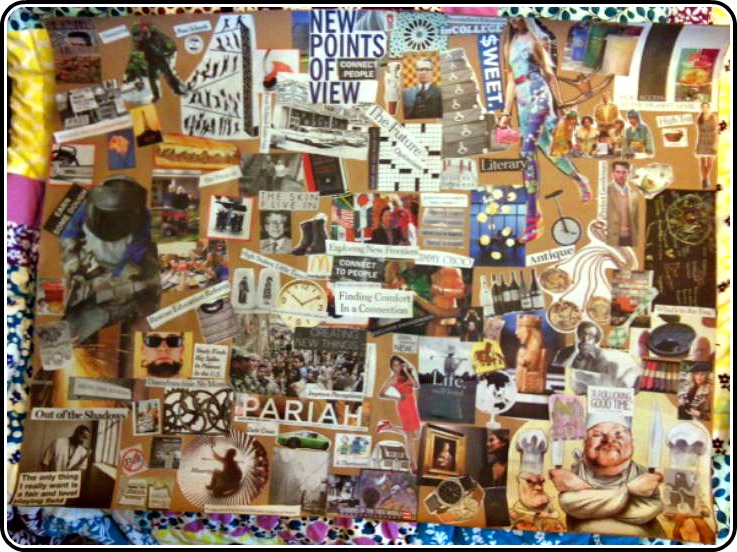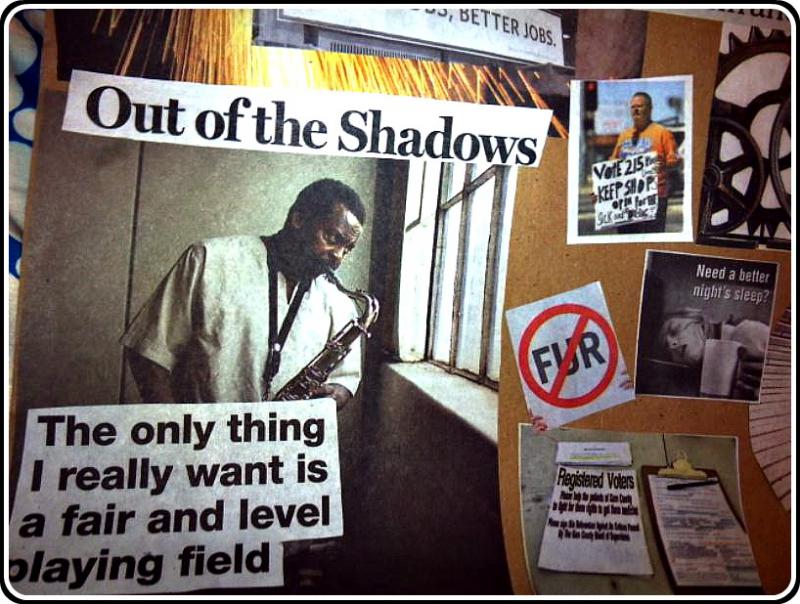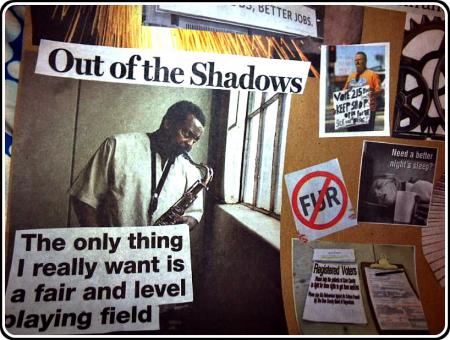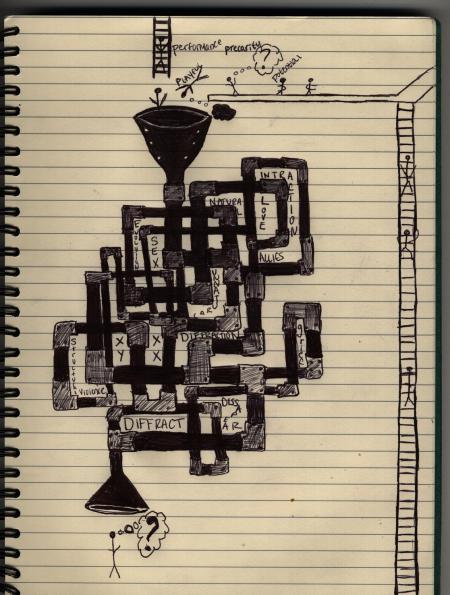Serendip is an independent site partnering with faculty at multiple colleges and universities around the world. Happy exploring!
Environmental Justice tied to Economic Justice
On Tuesday, I decided to participate in a direct, non-violent action against PNC bank in Philadelphia instead of going to class. The group I participated with is called the Earth Quaker Action Team (EQAT) and although they are primarily an environmental justice group, the action was actually focused on jobs and economic justice as well as environmental justice. PNC invests in mountain top removal coal mining in Appalachia, where basically mountaintops are blasted off to get the coal in the ground for energy uses. EQAT has lead a campaign to get PNC to divest from this for the past three years now. However, during the two groups’ last interaction, PNC defended their investment by stating that it creates jobs for the people in Appalachia, an area that happens to be a very poor part of the country in general. While this does provide jobs, it’s jobs that are harmful to the employees and are not sustainable. Also, the practice itself adversely affects the people who live in Appalachia in many ways – cancer rates have increased, more babies are born with birth defects, and many people don’t have access to clean water in their homes.

Questioning Gender Through Dance
First of all, apologies for being antisocial and doing my teach-in so individually. I really liked the group participation that so many of the other ones provided and I'm sorry mine kind of lacked that dimension!
For my presentation, I wanted to showcase some of the instances in which the assumptions about gender that we've been questioning all semester get questioned variously embodied ways in four distinct dance worlds, suggesting that in its inherent playfulness and performativity, dance is an important outlet for the creative expression of gender, both normative and nonnormative.
(Before I go through them, here's a great TED talk, Dance vs powerpoint, that inspired me to think about how one might do a "teach-in" that incorporates dance. If I had more than 7 minutes, I would have been doing some movement myself -- and getting you all to move, too!)
You have reached your destination, please open and see what's inside
Masquerade Ball: A Message to the Pretenders
pretending [pri-tend-ing] (v.) – the act of being something you are not
upper class [up∙per-class] (n.) – a class of people above the middle class, having the highest social rank or standing based on wealth, family connections, and the like
middle class [mid∙dle-class] (n.) – a class of people intermediate between the classes of higher and lower social rank or standing; the social, economic, cultural class, having approximately average status, income, education, tastes, and the like.
lower class [low∙er-class] (n.) – a class of people below the middle class, having the lowest social rank or standing due to low income, lack of skills or education, and the like.
mask [mask] (v.) – to disguise or conceal; hide; dissemble
Why is it that we pretend to be something we are not? “Poor people want to be rich. Rich people want to, well, blend in”
TOP TEN WAYS TO HIDE BEING RICH
New Points of View
Hello All,
This collage is titled “New Points of View,” and it aims to represent the various experiences and cultural capital we bring with us here to Bryn Mawr. Ultimately, social class is another form of diversity such as gender, race, or ethnicity. It shapes who we are and how we experience the world around us. However, social class is different from all of these things in the fact that the topic is alarmingly taboo. Although, like race and gender, it is something we are usually born into, we feel uncomfortable embracing it or even acknowledging its existance. This collage aims to ask the viewer whose culture has capital. Do we all have cultural capital? Whose is most important? Is anyone's cultural capital more valuable than others? Is there a way that we can acknowledge these differences rather than ignore them? And finally, how do we “bridge the gap” and learn from one another?

What differences do you see between the left side and the right side? Are these differences important? Which one more closely mirrors your experience?

What are your feelings about the American Dream? Is it attainable for everyone?


Hillary Clinton's speech
Hi everyone,
I just wanted to say that I'm heartened that this space will live on past the official ending of our class/ semester. In the spirit of perpetual online communities I thought I would make one more post regarding activism and current events.
Has anyone seen this?? It speaks to the concept of rights in regards to cultural relativism. We've been talking a lot about the importance of individual activism on a structural level. It's rather hard to conceptualize how an individual such as myself could possibly go about creating change on anything but an individual level. I'm not a member of congress. I'm not a millionaire. I'm certainly not Paul Farmer.
Believe me, I appreciate the value of social movements and the inherent potential of many voices mobilized against oppressive power structures. But we also have to think about our elected leaders as resources for change. While social movements are vital to cultural structural change, government leaders have the capacity for structural and legal change. The symbolic power of government public protection and recognition can go a long way for both activists and opponents.

"Yarning" A Playful, Precarious, Potential Right Relationship
Our concluding activity is a diffraction of Eve Ensler's litany, Karen Barad's concept of entanglement, and John Humbach's discussion of right relationship.
Each member of the class wrote their individual contribution to the litany enumerated (anonymously) below. The model we offered was, "I am over ______./, (and) I commit to ______." All of the slips of paper were mixed together before being passed out at random. One by one, we entangled our ideas by tossing the ball of yarn to the member of the class whose utterance was shared. They then read the slip in their own hands and repeated the tossing process, being careful to pull enough excess string from the ball of yarn prior to toss! Below is a cropped image of our circle and the yarn, captured by Anne Dalke.

Please, classmates, return here for inspiration and conversation. If I did not procure your contribution, feel free to email me (jmussa@haverford.edu) and I'll gladly add it to this post. The semester is coming to a close now, but we're just getting started, eh? ;)
---------------------
I'm over observing from the sidelines as a passive ally for rape and sexual assault survivors. I commit to the active pursuit of JUSTICE.

The Entanglement Machine!
During class tonight I drew this, thinking about some of the main themes of our course.


info session: solidarity delegation to Nicaragua
I have received funding from CPGC to lead an educational delegation of six Bi-Co student to Nicaragua from May 30-Jun 8. This 10-day study tour, which will introduce students to the political, economic and cultural histories of Nicaragua, is coordinated by ProNica, a Quaker organization founded in 1987 to build “sustainable cross-cultural relationships between the people of North America and Nicaragua” and will be guided by Carmen Gonzalez, who has lived in Nicaragua for over 20 years.
Our delegation begins in Managua, where we stay at Quaker House, learn more about Nicaraguan culture, speak with community leaders, and visit sites important in the Sandinista revolution. From there, we travel to smaller cities and villages in the central highlands, such as San Marcos, Matagalpa, San Ramon, Esteli, Largatillo, and
Achuapa to meet with grassroots organizations that provide integrated health care, opportunities for childhood and adult education, and link producers to fair trade markets. We will speak with women whose husbands and children were killed during the Sandinista Revolution and the Contra War, with adults who provide a safe space for children living in La Chureca, the largest open land-fill in Central America, with women’s healthcare providers, with farmers, librarians, artists and shopkeepers. These interactions will help us understand on a deeper level how international policies and interventions affect the lives of our Nicaraguan neighbors and how we can be in solidarity with them as they build healthier and more sustainable communities.



